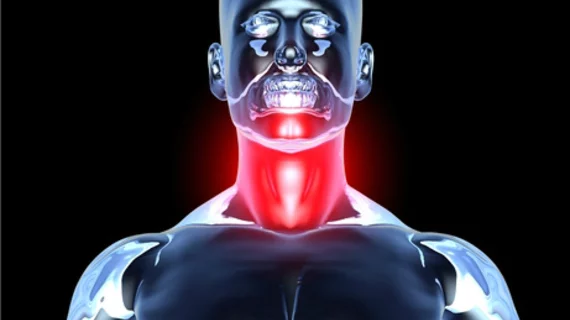A three-dimensional radial MRI-based approach improves overall image quality and offers many advantages over similar protocols when examining the head and neck region.
Performing an MRI of a patient’s head is difficult; swallowing and breathing require high image-acquisition speeds and metal dental fillings can introduce artifacts into the process. Radial-based imaging approaches, however, have proven valuable in addressing some of these limitations, particularly in pediatric patient populations for which the method was originally designed.
And when a team of German researchers pitted the approach against turbo spin-echo (TSE) and other similar protocols, such as cartesian 3D gradient-recalled echo (GRE), 3D radial MRI improved fat saturation, reduced the impact of materially caused artifacts and improved overall image quality.
“To our knowledge, a direct comparison between radial GRE and cartesian 3D GRE sequences has not yet been performed for neck imaging, and it seemed to us a valuable comparison to be made because both sequences allow reconstructions in all planes, which is quite often helpful in an anatomically complex region such as the head and neck,” Ute Lina Fahlenkamp, with Charité Universitätsmedizin Berlin, and colleagues wrote.
To arrive at their conclusions, the researchers retrospectively analyzed 26 patient who underwent an MRI for inflammatory or neoplastic diseases in the head and neck area. Two independent readers assessed the different protocols, and evaluated qualitative parameters.
Overall, each of the three imaging sequences—T1-weighted TSE, cartesian 3D GRE and radial GRE—were adequate for performing MRI on the head and neck, but the latter offered a few more advantages. Those included a smaller mean area invisible due to artifacts, improved clarity of muscle edges and vessels, and better fat saturation.
Combined, these factors led to a better image, the authors wrote.
“Our results imply that all three evaluated sequences are appropriate for MRI of the head and neck region. Nevertheless, radial GRE appears to be superior to TSE and cartesian 3D GRE in many aspects, leading to an improved overall image quality,” they added.
Read the entire study, published Jan. 8 in the American Journal of Roentgenology.

